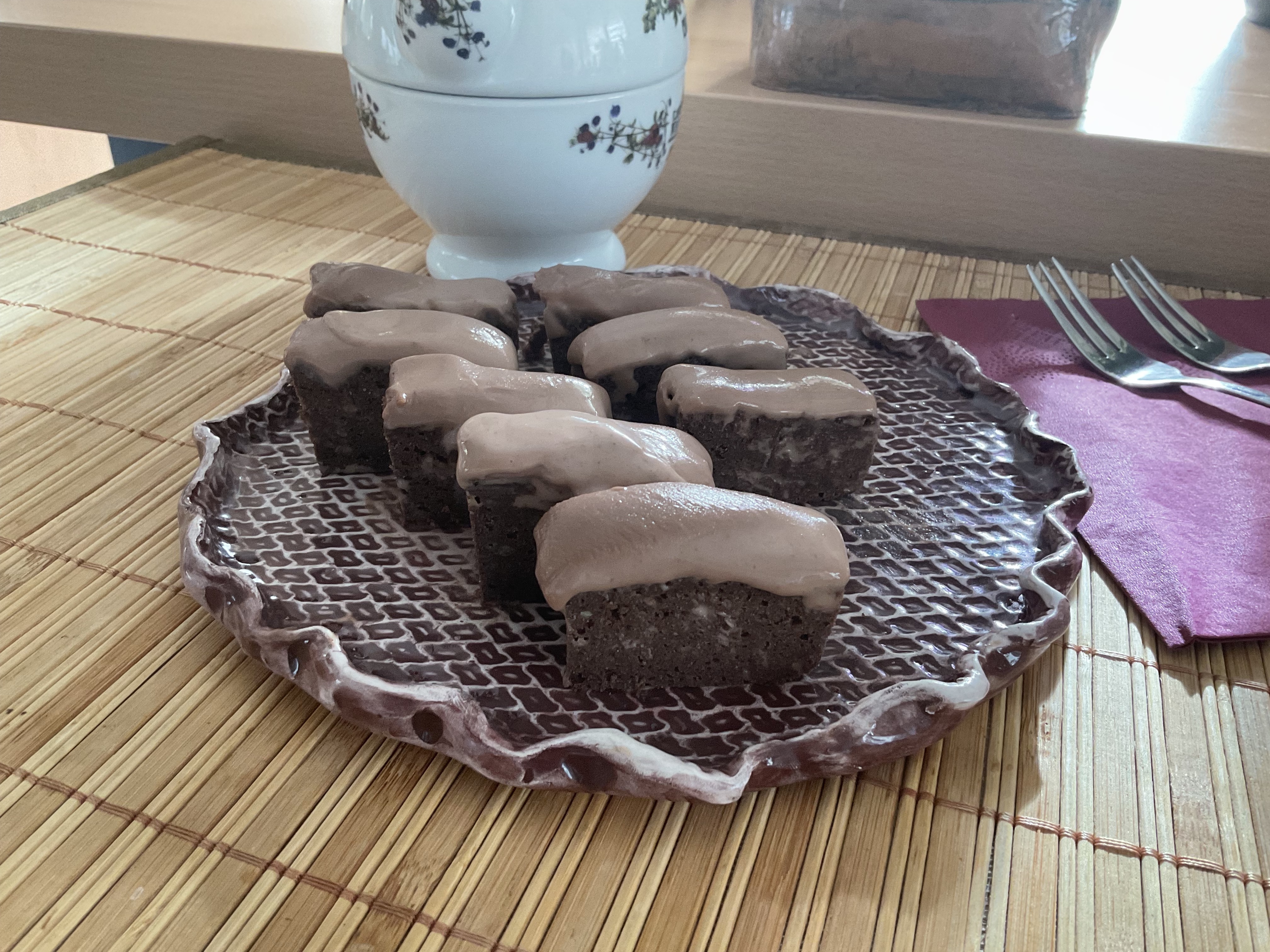 |
Nature’s Dessert Cookbook: Healthy, Delicious & Naturally Sweet Recipes Don’t want or can’t tolerate sugar alcohols and artificial sweeteners? This cookbook is for you! Every dessert is naturally sweetened with whole ingredients rich in fiber and protein, slowing sugar absorption and making them diabetic-friendly. It gathers your favorite recipes from the website—plus brand-new ones—all in one convenient place. Indulge in truly natural treats without compromise! |
 |
Diabetic Baked Goods: Everyday Bakes for Every Meal Diabetic cookbook designed to make healthy baking simple, accessible, and enjoyable. This collection of low-carb, high-fiber, and protein-rich recipes provides a reliable solution for those looking to enjoy diabetic bread and baked goods without blood sugar spikes. Every recipe includes a video tutorial, making it even easier to follow along and bake with confidence! |
 |
What Makes This Cookbook Different?
|
Buckwheat Flour

Buckwheat flour offers an array of health benefits. Its distinct flavor and impressive nutritional profile ensure that buckwheat flour can fit seamlessly into a variety of recipes, including desserts and pastries.
I combine different ingredients because each one has unique nutritional benefits and contributes to overall health. That's why I like to use buckwheat flour as well.
Buckwheat Flour: Benefits for Diabetes Management and Overall Health
Buckwheat flour nutrition facts highlight its rich composition of essential nutrients. It is an excellent source of protein, dietary fiber, and important vitamins such as B vitamins. Additionally, it contains essential minerals like magnesium, iron, and phosphorus.
The dense nutrient content supports overall health and well-being, making it a valuable ingredient in anyone’s diet, especially for diabetics.1
- One of the most significant benefits of buckwheat flour is its low glycemic index (GI). This makes buckwheat flour an ideal choice for individuals aiming to keep their blood glucose levels in check.
- Buckwheat itself is a gluten-free pseudo-cereal, meaning it does not contain wheat or gluten. This makes it suitable for those with celiac disease or gluten sensitivity. Furthermore, its gluten-free nature contributes to its anti-inflammatory properties, which are crucial for managing chronic diseases, including diabetes.
- In terms of blood sugar regulation, buckwheat flour has demonstrated beneficial effects. Research shows that regular consumption can lead to improved blood sugar control. Its fiber content is particularly noteworthy; dietary fiber slows glucose absorption, leading to more gradual increases in blood sugar levels. This property is especially valuable for diabetics who need stable glucose levels.
Beyond its benefits for blood sugar control, buckwheat flour offers a variety of health benefits. Buckwheat is the only field crop that contains rutin, a powerful antioxidant that supports cardiovascular health by strengthening blood vessels and reducing blood pressure. Additionally, rutin has anti-inflammatory and anticancer properties, contributing to overall health improvement.
For women exploring alternatives to wheat flour, buckwheat flour can be a delightful addition to their baking repertoire. While it has a distinct flavor, it can blend well with other flours, such as spelt flour, to balance the taste. Combining buckwheat with higher GI flours can be an effective compromise in producing nutritious and delicious desserts.
My Buckwheat Flour Baking Journey
My experience using buckwheat flour in baking for my diabetic son has been overwhelmingly positive. The flavor is mildly nutty and earthy, which adds a unique dimension to our favorite desserts. More importantly, the health benefits it offers assure me that I am making better choices for our well-being.
When using buckwheat flour in desserts and pastries, you may notice a difference in texture compared to wheat flour. Buckwheat flour yields a denser and moister product, which can be advantageous in recipes like brownies, pancakes, or muffins. Adjusting the liquid content or combining it with other flours can help achieve the desired consistency.

Experimenting with different recipes can help you discover how well buckwheat flour fits into your family's dietary needs, providing both nutritious and delicious options. Substituting it partially for wheat flour in familiar recipes can help you adjust to its distinct flavor and texture, ensuring a smooth transition.
Adding up to one-quarter buckwheat flour to the total flour amount doesn't affect the dough's texture too much. Of course, in some recipes, I use only buckwheat flour. It's important to experiment because, through experience, we can better understand how to use buckwheat flour in various recipes.
A Healthy Baking Alternative
The nutritional composition of buckwheat flour plays a crucial role in its benefits for diabetics. Its high fiber content, specifically soluble fiber, slows carbohydrate digestion and absorption. This not only moderates blood sugar levels but also promotes satiety and aids in weight management – an essential aspect of diabetes care.
Magnesium, abundant in buckwheat flour, is another important mineral for diabetics. It supports muscle function and glucose metabolism, which are vital for maintaining healthy blood sugar levels. This makes buckwheat flour a practical component of a diabetes-friendly diet.
Antioxidants present in buckwheat, such as quercetin and rutin, also play a significant role in managing oxidative stress, which is often higher in diabetics. These antioxidants help protect the body from inflammation and cell damage, further underpinning the health benefits of incorporating buckwheat flour into daily meals.
Buckwheat flour's positive impact on heart health is another compelling reason to make it a staple in your baking. Regular consumption can help lower cholesterol levels, reduce blood pressure, and improve overall cardiovascular health, which is particularly important for diabetics who are at higher risk for heart disease.
In summary, buckwheat flour offers numerous health benefits and a unique taste profile that can transform ordinary recipes into nutritious delights. Its role in blood sugar regulation makes it especially suitable for diabetics, and its dense nutritional content supports overall health.
While buckwheat flour's taste may not appeal to everyone, pairing it with complementary ingredients can enhance its palatability. Ingredients like vanilla, cinnamon, and cocoa can mask any strong flavors, making it an enjoyable experience for everyone, especially when buckwheat flour is combined with another type of flour.
As you explore buckwheat flour in your baking endeavors, remember its profound benefits for health and blood sugar management. Its enriching qualities can bring positivity and encouragement into your kitchen, supporting a healthier lifestyle for your whole family.
Embracing buckwheat flour in our baking not only supports better blood sugar regulation but also introduces a wholesome, nutritious ingredient into our diet. By making this change, we’re taking active steps towards improved health and well-being for ourself and our loved ones.
Let the warm and friendly nature of buckwheat flour inspire your baking journey, and enjoy the many benefits it has to offer.






